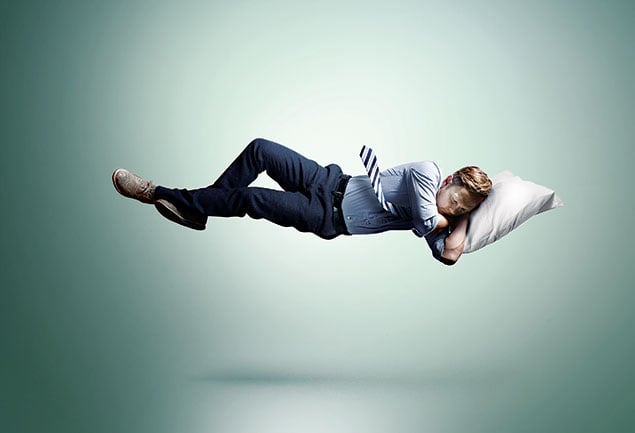Is there anything better than waking up, raising your arms overhead in a delicious reach-for-the-ceiling stretch, then thinking with refortified determination: Come on, 3:30 in the afternoon—bring it!
You see, I love naps. Nothing sweeps away the droopy, post-lunch doldrums like 20 minutes of downtime. A brief withdrawal to Slumberville is more than repaid by a redoubling of intellectual acumen upon return. Now science is onboard, too, with a thicket of nap-bolstering studies. The “n” word, once considered a vice, is increasingly viewed as virtuous.
The humble nap “provides significant benefit for improved alertness and performance,” says the National Sleep Foundation. Harvard Medical School touts naptime’s potential to “boost learning, memory, and creative problem solving.” And NASA has been in the pro-nap camp for decades. Anything that aids astronauts hurtling through the dark recesses of space can surely assist an office worker schlepping through a Tuesday afternoon.
I came early to the concept of napping. When first reporting to Montgomery County public-school kindergarten in 1968, I clutched a small rug for naptimes. All the kids did. (Emblazoned with a picture of Donald Duck, mine was a threadbare affair thanks to three older brothers who had kicked and drooled on it before me.) Curiously, the one time napping was mandatory was the one time I rarely slept. While I was prostrate on Donald, the rubber toes of my sneakers could propel the rug across the slick linoleum floor, allowing me to bob and weave amid my prone classmates. (Well, as long as Mrs. Gretchen was out of eyeshot.)
My napping may have genetic roots, as Mom loved an afternoon lie-down. After school, I’d sometimes find her swaddled in blankets, with instructions in the kitchen on when and how to stick dinner in the oven. I learned it was okay for adults to nap—and that you roast pork at 350 degrees, fat side up.
My nap enthusiasm was challenged in the 1980s with my first taste of the work week—as a tech-support drone in a cube farm. For a 20-minute restorative, I was forced to slink out to the parking lot. (To the long list of grievances leveled against the Chevy Chevette, you can add that it’s impossible for a six-footer to get truly comfortable in one.) Subsequent jobs came with nap-enabling office doors (I’m sorry, did you knock earlier?) or else required a little sleuthing, such as a Dupont Circle gig in which I staked out an orphaned pair of lounge chairs in a dim, low-trafficked corner. You want someplace quiet and out of the way, but not too out of the way—say, a utility closet—lest it appear you’re hiding or engaged in behavior more pernicious than catching some quick shuteye.
These days, there are office nap rooms (a perk that 3 percent of US workplaces provide, says the Society for Human Resource Management). Not to mention the $12,985 MetroNaps EnergyPod, billed as “the world’s first chair designed uniquely for napping in the workplace.” You’ll find these at Google headquarters and other high-tech hives.
No matter for me, as I now work at home and need only troop upstairs and wedge myself between two slumbering dogs (there’s a species that knows how to nap) for a reclining recharge. If I don’t answer the phone at 4, try again at 4:30. I’ll be raring to talk then.
Nap at Work? Rest Assured.
People used to get canned for napping on the job. Today, office sleepers might also be shown the door—but this door opens into a nap room, where snoozing between 9 and 5 can be done with HR’s blessing. Tech firms in particular embrace the notion that a quick shut-eye recharges employees.
Workers at AOL’s Dulles offices have a pair of such rooms at their disposal—secluded, windowless nooks with a chaise longue, blankets, pillows, and an alarm clock.
“We try to create that feeling of home so folks can really decompress,” says Stacey Gemmell, an AOL benefits consultant.
Who puts their feet up, and for how long? Well, nobody knows.
“We don’t monitor them or have any sort of sign-up,” Gemmell says. “We advise people to go in for 10 to 20 minutes, but what people are actually doing we are not entirely sure. We’ve not heard of anyone abusing them and taking hourlong naps or anything like that.”
Brennen Jensen (bgray.jensen@gmail.com) is a Washington-born writer who now lives—and naps—in Baltimore.
This article appears in the December 2014 issue of Washingtonian.


















